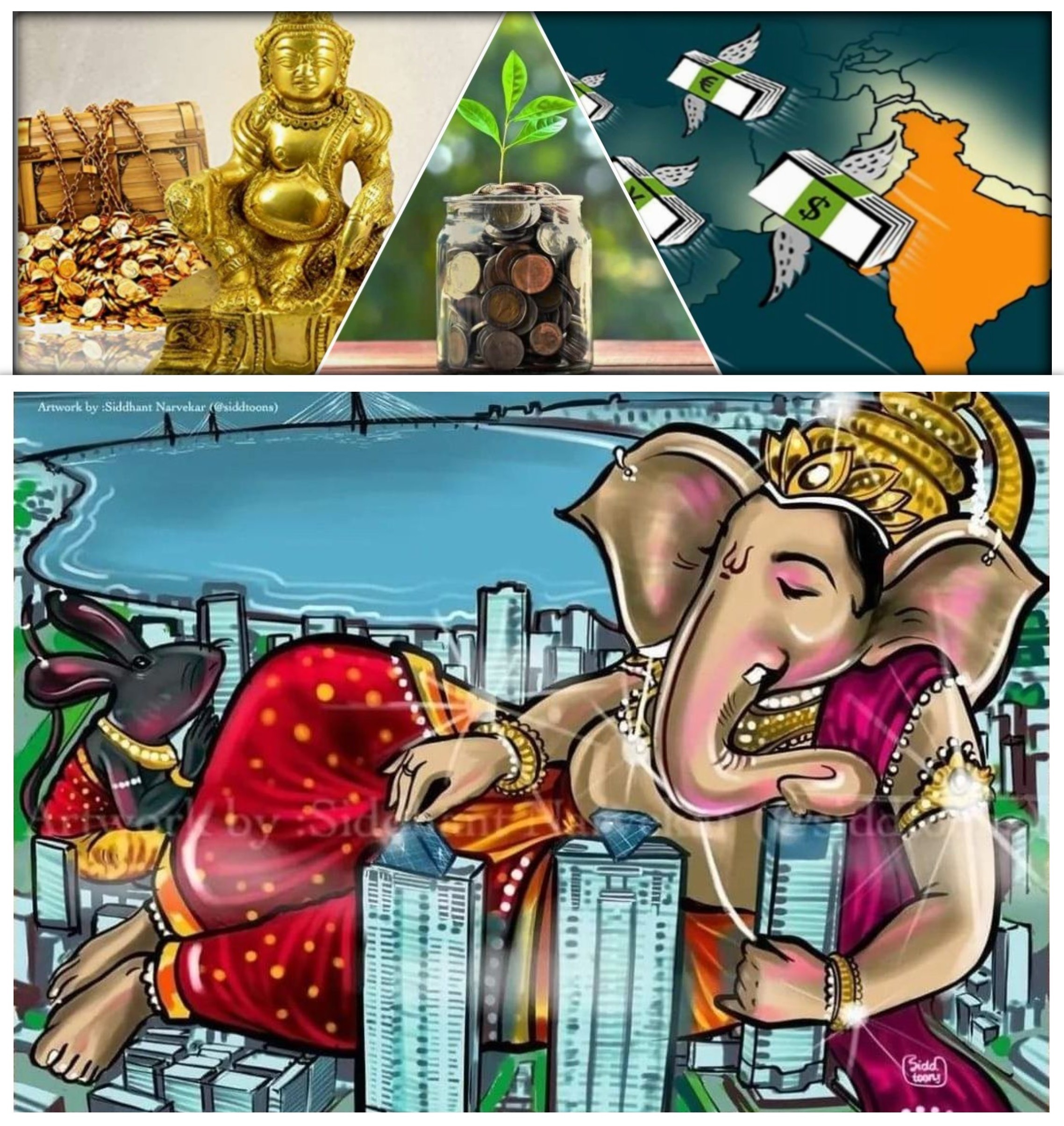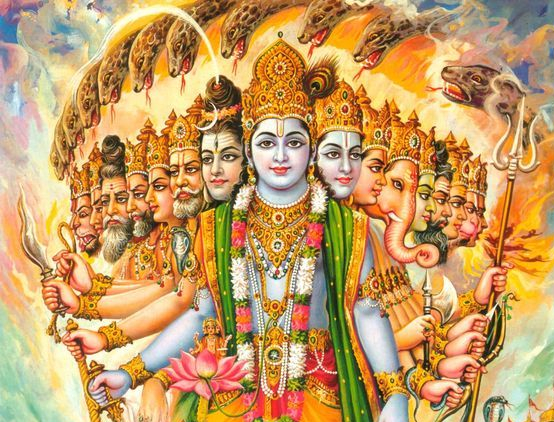- Visitor:33
- Published on:
Savings as a national drive in Indian Economy
Savings is a habit, culture, and civilization – all rolled into one. Post-liberalization, India has provided increased market access. Despite these developments, Indians have achieved higher savings rate post liberalization – a theoretical contradiction. This savings is an outcome of certain civilizational restraints and makes Indian economy, by design, to operate within certain restraints.

Economy and a Civilizational Connect
The answers to these questions require some reference to certain recent developments in the Indian economy. It may be interesting to note that liberalization of the Indian economy since the early 1990s has not ended liberalizing the average Indian. In fact, if the average national saving rate is any indication, India has achieved a higher savings rate post liberalization than during the pre-liberalization era. If the average savings rate was a mere 17 percent of the GDP in the 1980s, the savings rate has doubled to approximately 31 percent of the GDP in the second decade of the 21st century.
Notably, this domestic savings virtually funds our domestic investments. It is this investment that go on to ensure domestic production of goods and services. That, in turn, provides domestic employment and consequently ensures domestic consumption. Domestic consumption ensures taxes for the local government. All these virtually insulates India from any exogenous shocks and global gyrations of both financial markets and economy. If the four limbs of an economy – production, consumption, savings, and investments – are domestically rooted in any country, it is indeed blessed.
That is not all. The high savings-to-GDP ratio makes any foreign investment less significant than it is made out by the media. It is in this connection that a 2009 Report of the ‘High Level Committee on Estimation of Saving and Investment’ set up by the Ministry of Statistics and Programme Implementation under the chairmanship of Dr. C Rangarajan concludes: “More than 98 percent of investment is funded by domestic savings. As a result, the savings-investment gap has remained relatively in a narrow range reflective of modest reliance on foreign savings.” That implies that domestic savings virtually funds the domestic investment, leaving a meagre two percent to be sourced as foreign direct investments. Though this report is of 2009 vintage, the situation at the ground level has not undergone any significant changes. No wonder, it is this paradigm that goes on to provide the necessary confidence to political leaders to tide over any crisis – internal or external. It may be interesting to note that approximately 70 percent of this gargantuan saving comes from Indian households. Needless to add, that the balance thirty percent of our national savings comes from the private corporate sector and public sector put together.
Yet, not many within the establishment recognize the fundamental role and civilizational reasons of savings in the Indian context, especially that of households. Indians, if may be noted, have a civilizational connect to save. This is another unexplored characteristic of the Indian economy. Savings is a habit, culture, and civilization – all rolled into one. Post-liberalization, India has provided increased market access. Despite these developments, Indians have achieved higher savings rate post liberalization – a theoretical contradiction. This savings is an outcome of certain civilizational restraints and makes Indian economy, by design, to operate within certain restraints.
And such an economy is necessarily resilient, especially in a crisis. This contradiction was well-explained by Shri S. Gurumurthy, in a lecture titled Current Economic Crunch and Problems of Industries Particularly MSMEs, which was organized by National Confederation of Small industry and Industrial Estate Manufacturers Association in August 2013. Pointing out to that in 1992, (coinciding with the initiation of economic reforms in India) when Manmohan Singh was Union Finance Minister, there were certain differences within the government on the approach to manage the Indian economy. It was at this time that Dr. JagadishBhagwati, a noted economist, was invited to India to provide some fresh ideas. Dr. Bhagwati then, according to Shri Gurumurthy, gave a 72-page report, arguing for reorientation of the Indian economy. One of significant shifts advocated by Bhagwati was to provide a consumerist thrust to the economy, as there was excessive savings in India, which was stymying growth. That was when the savings-GDP ratio was a mere 17%. Despite such suggestions of ‘well-meaning economists’, and possibly policy interventions arising out of such recommendations, India grew, and so did her savings. But how did India manage it by breaking free from the conventional wisdom of eschewing blind consumerism while maintaining a healthy growth rate? How could it record both robust economic growth as well as spectacular rising in savings rate? The answer probably lies in the fact that, in India, there is a symbolic relationship between the spiritual and practical life. We shall look into this when we discuss the idea of Ardhanarishvara in Chapter 10. Some economists now concede that there is a live demonstrable link between the way people live and their philosophical aspirations. As explained in Chapter 6, all these abstract issues are incapable of being reduced to a mathematical equation. Since all these cannot be reduced to a mathematical equation, modern economists refuse to factor this in their analysis.
Inexplicable fact of life
Let us at this point return to the spectacular rise in the Indian savings rate post-liberalization. As pointed out earlier, the Indian savings rate, contrary to expert opinion and popular belief, virtually doubled in this three-decade period. it may be recalled the prescriptions of reducing savings rate made out by certain economists. As pointed out above, not only did India record robust economic growth, but she also recorded a near doubling of her savings rate during this period. Economists have been unable to comprehend this. How did this happen? Why did India turn to higher savings, even as her economy was increasingly getting liberalized? How did these savings become the chief drive of the national economy during this period? Why did India adopt a savings-led model in contrast to the consumer-led model prescribed by well-intended economists? Did this happen by design of the government or by default? Questions that have no answers in economic textbooks.
There is a fascinating dimension to this issue. The 2017 Report of the Household Finance Committee of the Reverse Bank of India (RBI) has summarized the Indian household savings landscape. The key findings of this Committee are that Indian households are unique when compared to their global counterparts and summarized hereunder:
- Several attributes of Indian households that are exceptional in the international context.
- The distinctive features of Indian household balance sheets cannot be explained by any known differentials.
- It appears that these patterns are likely driven by unique aspects of Indian households’ financial decision-making.
- A large fraction of the wealth of Indian households is in the form of physical assets (in particular, gold and real estate). This is unusual in the international context.
- Social arrangements in which households’ bequest housing wealth to future generations and in turn receive support during retirement are an underlying determinant of these patterns.
- Such traditional approaches to household financial management have likely evolved over time as a rational response to prevailing economic conditions.
- The Indian household finance landscape is distinctive through the near total absence of pension wealth.
- There are low levels of insurance penetration (life and non-life).
- This is future evidence that traditional and cultural factors are strong determinants of observed allocations.
According to the findings of this committee, the average household holds saves 77 percent of its total assets in real estate, seven percent in other durable goods, 11 percent in gold and the residual five percent in financial assets (such as deposits and savings accounts, publicly traded shares, mutual funds, life insurance, and retirement accounts). Further analysis of the smallest share of the pie – the financial assets – and how this five percent is invested in various asset class reveals an interesting pattern. It may be noted that along with the liberalization of the Indian economy, Indian financial sector has undergone spectacular reforms. Despite such sweeping reforms, regulatory oversight and tightly supervised intermediation, Indian households have refused investments in high risk instruments. For instance, the share of investment in stock and bond markets has been a mere 3 percent of the total financial savings of households. Despite the spectacular rise in the Indian stock markets, Indian households have not been sufficiently enticed by it to shift their financial savings into the stock markets, not to speak of debt markets. In direct contrast to the meagre savings investment in the stock markets, the savings retained in the form of cash and bank has been at a whopping 13 and 42 percent respectively aggregation to 55 percent of the total financial savings. Substantial amount of financial savings is also retained as investments in insurance (17 percent) and in pensions (19 percent). Thus, amount in excess of 90 percent of household savings is either held as cash or in sectors which are very tightly regulated, low yielding but also having little or no risk. Again, economic textbooks will be unable to provide any clear answer to this phenomenon why domestic investments in high-risk high yielding avenues are marginal and disproportionately higher in low yielding yet relatively safe sectors.
Source:
The original topic named: Economy and a Civilizational Connect and Inexplicable fact of life, Retaining Balance (The Eternal Way), MR Venkatesh, Page No. 330-332 and 335-337
Center for Indic Studies is now on Telegram. For regular updates on Indic Varta, Indic Talks and Indic Courses at CIS, please subscribe to our telegram channel !
- 16 min read
- 0
- 0










